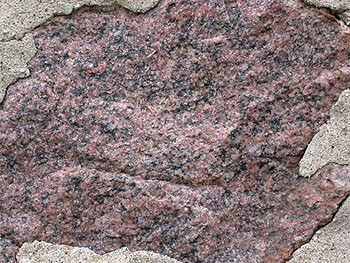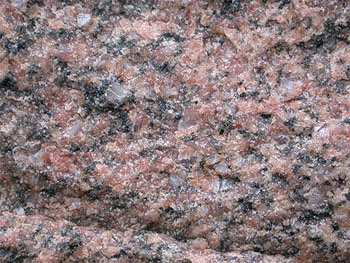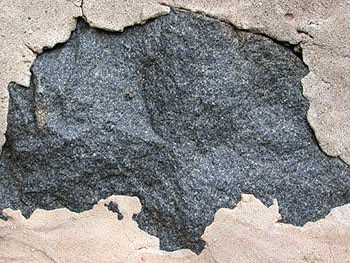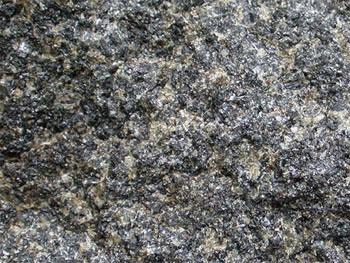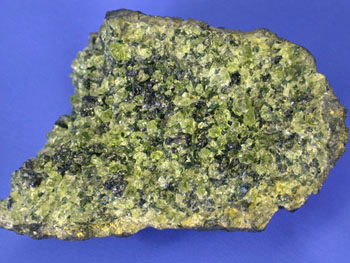
|
| Coarse-grained textures generally indicate magmas that slowly cooled deep underground. Slow cooling gives crystals enough time to grow to easily seen sizes (i.e., larger than 1 mm).
The first-formed crystals tend to have regular shapes because they grow freely into the surrounding liquid. Later-formed crystals find themselves competing for space with their solid neighbors; they are forced to fill in the irregular gaps. Thus, you can often figure out the relative order in which the minerals crystallized from the magma. The column of rocks below goes from most felsic at the top to most mafic at the bottom. |
Go back to Igneous Rocks page
Return Home
|
|
|
